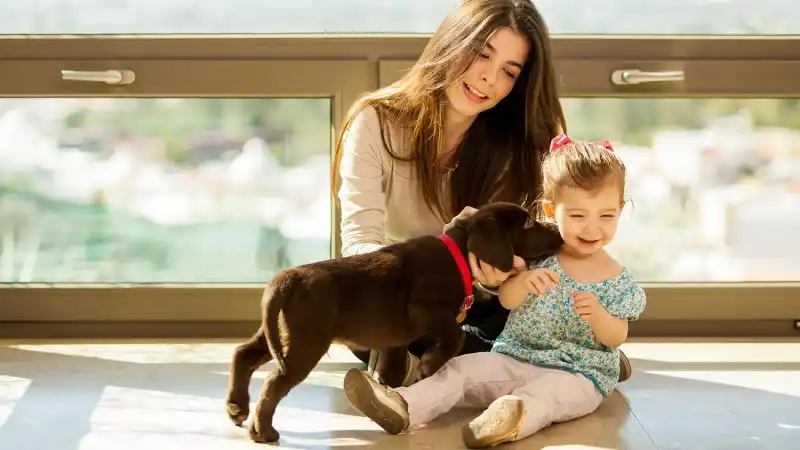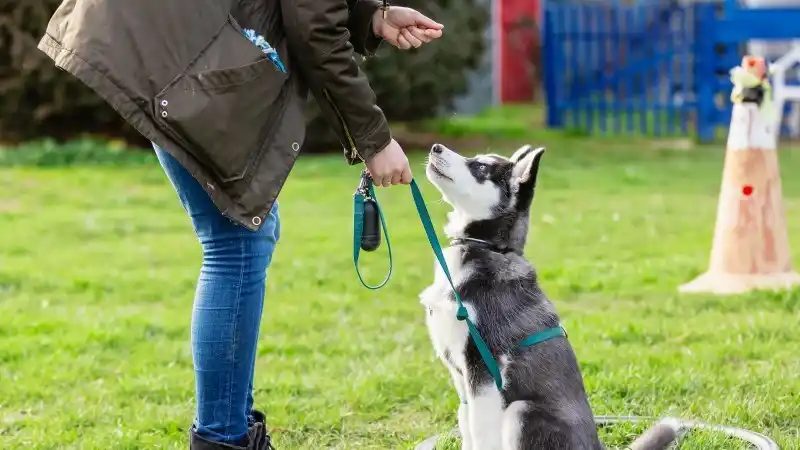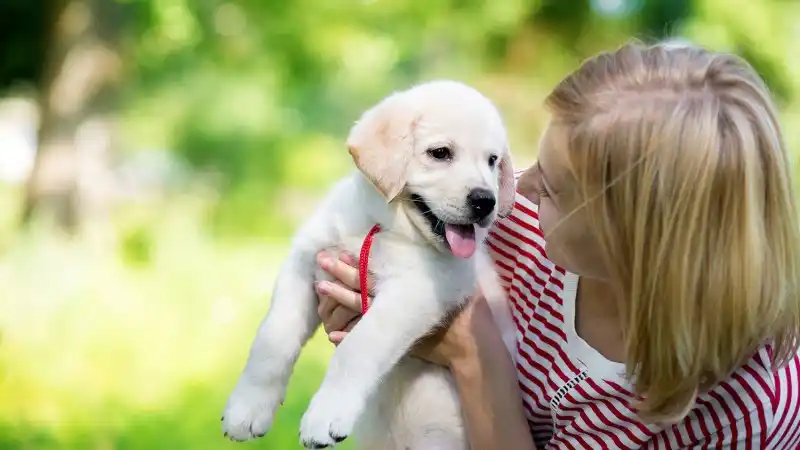What Do Dogs Dream About?
What do dogs dream about? Can dogs have nightmares? Learn more about how you can help your dog have a more peaceful, relaxed, and restful sleep.
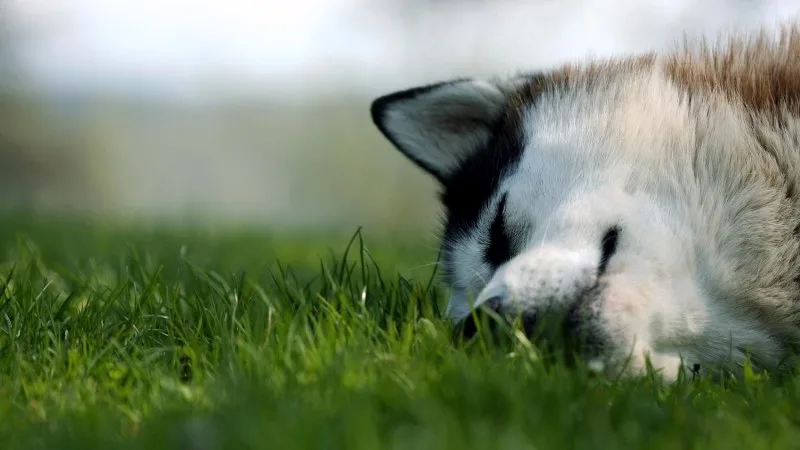
Yes, dogs do dream. On average, dogs sleep about 12 to 14 hours a day. For puppies, they need closer to 19 hours of sleep daily. It takes roughly 10 minutes for dogs to enter a deep, dream-filled sleep, but what do dogs dream about?
How Do We Know Dogs Dream?
Researchers have studied brain waves of dogs during their sleep cycles and compared them to humans’ brain waves. Dogs experience rapid eye movement (REM) sleep and slow wave sleep (SWS) just as humans do. The REM stage of sleep is a deep sleep where dreaming can occur, and dogs spend about 10% of their time in this dreaming phase while they sleep.
One of the earliest sleep research studies on pets was conducted by Michel Jouvet, with a series of sleep experiments on cats. Initially, his studies focused on the similarities between sleeping cats and sleeping humans by measuring muscle tension and brain activity. Later in his research, he disabled a part of the cat brainstem known as the pons, which controls paralysis during sleep. During REM sleep, the pons is responsible for sending signals to the muscles to relax and abstain from acting out dream motions. Once a cat’s body is no longer inhibited of movement during REM sleep, the cat can perform actions like they would when they were awake. The feline subjects stalked invisible prey, groomed themselves, and walked around – all while asleep!
How Are Dog and Human Sleep Cycles Different?
Dogs and humans both experience slow wave and rapid eye movement stages of sleep, but these stages occur differently in their respective sleep cycles. Humans will average about four or five complete cycles per night, with each cycle lasting roughly 90 minutes. Canines, on the other hand, have shorter, 15-minute cycles and often experience 20 per night.
What Do Dogs Dream About?
Similar studies to Jouvet’s cat research have been done more recently, temporarily deactivating the pons in several different dog breeds. With the pons deactivated, the dogs were free to act out their dreams and often acted out activities that they enjoyed doing while awake. Pointers would point at dream birds, dogs who liked to chase would “run” in their sleep, and so on.
Does Age or Breed Affect a Dog’s Dreams?
It has been found that small dogs dream more frequently than large dogs, however, the small dogs’ dreams are often shorter in duration. Age may also play a factor in your dog acting out their dreams. Younger dogs have an underdeveloped pons and senior dogs have a pons that may not work as efficiently. This contributes to less control of muscle paralysis during sleep, which is why puppies and senior dogs are often more “active” while sleeping.

Every Dog and Cat Deserves the Pet Insurance of Champions
Get prize-winning care for your pets.
Can Dogs Have Nightmares?
Unfortunately, dogs can have nightmares. If you think your dog is having a nightmare because they are snarling, growling, or crying out, restrain the impulse to wake them. Dogs who are awakened from a scary dream may not know where they are right away and could impulsively lash out at you. Dogs don’t have the ability to construct fearful, imaginative monsters, so when your dog has a nightmare, they are remembering a traumatic experience. If your dog has frequent nightmares, try to make their sleeping environment more relaxed. Play quiet music, provide a crate to help your dog feel safe in a “den,” or try a pressure wrap.
What Does a Dog’s Sleeping Position Mean, and How Does It Affect Canine Dreams?
A dog can sleep in any comfortable position and still dream. Dogs who sleep on their side are often relaxed and their limbs are freer to move during their dreams. If your dog plops down on their side against your body, they are showing affection and consider their naps with you as bonding time.
If a dog prefers to curl up in a ball, there won’t be as much active movement, but that doesn’t mean they’re not dreaming. Dogs who sleep in a curled-up position may choose to do so because they feel safer with their vital organs protected, want to conserve warmth, or think they may need to get up quickly.
The “superman” position, where a dog sleeps on their stomach with their legs kicked out, is a favorite of high-energy puppies who want to be prepared to hop on their feet at a moment’s notice to play. Because puppies have less control of their body when sleeping, you can often see them dreaming in this position.
If a dog chooses to sleep on their back with paws up in the air, they may be cooling down, since hair is thinner on a dog’s stomach and the paws hold a dog’s sweat glands. Only dogs who are very comfortable with their surroundings will flop down and take a nap in this position.
Tips for a Better Night’s Rest for Your Pup
Whether your dog is a rambunctious dreamer or a quiet, tightly curled ball, it’s important to provide a comfortable sleeping spot for them to call their own. Leave out blankets or a dog bed if you don’t allow them to sleep in your bed with you.
Ensure that your dog’s bed isn’t somewhere that will get too hot or too cold, such as in direct sunlight or near a drafty door. Don’t forget to give your dog plenty of exercise during the day to wear them out and give them something sweet to dream about.
If you are concerned about your pet's sleeping habits, dog insurance may be able to help. AKC Pet Insurance (underwritten by Independence American Insurance Company) offers coverage for alternative treatments, such as behavioral therapy, if the treatment is recommended by a veterinarian.
Pet insurance can help to protect against unexpected veterinary bills when your dog is sick or hurt, so you can focus on helping them feel their best.

Every Dog and Cat Deserves the Pet Insurance of Champions
Get prize-winning care for your pets.
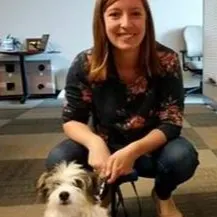
Mary comes to AKC Pet Insurance with an extensive background in animal care. As a lifelong animal lover, she has a passion for promoting pet health and wellness. Mary lives in Kentucky with her orange kitty, "Cat" and her dog, " Wubbi".
READ MORE ARTICLES